What to do in Ostrobothnia, Finland? This is an interesting area for travelling, full of beautiful nature, picturesque wooden towns and historical sights. Here you'll find all our top tips for things to see and do in Ostrobothnia, with a focus on the summer months.
Table of contents
Ostrobothnia
Ostrobothnia is a province in Finland, with Vaasa as its capital. The region includes 14 municipalities and six cities: Jakobstad, Kaskö, Kristinestad, Närpes, Nykarleby and Vaasa. Much of Ostrobothnia is bilingual with Swedish as the majority language. The largest city, Vaasa, is also bilingual, but the majority language is Finnish. It is possible to speak Swedish almost everywhere in this area.
We travelled around here last summer, with our camper van, and we really appreciated the beautiful nature, the nice cities and the great tranquillity. For example, we had never problems getting a place on a campsite or pitch, even though we travelled in July and even though we never booked. It simply felt very relaxed travelling here!
We highly recommend travelling in this area, and here are our top tips on what to see and do in Ostrobothnia, with a focus on the summer season.
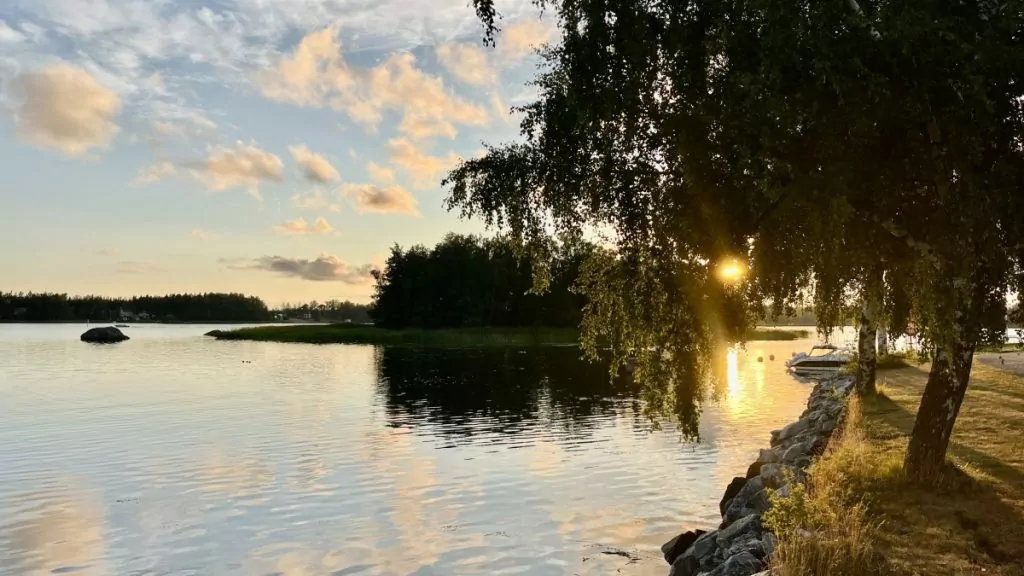
Ostrobothnia is located in Finland, on the western coast of the country. You can get here from the south (e.g. by ferry to Helsinki). Turku), via Wasaline (ferry Umeå - Vaasa) or from the north (by road from Haparanda).
What can you do in Ostrobothnia?
So what can you do in Ostrobothnia? Whether you like nature, history or culture, there is plenty to discover. Here are our very best tips. If you are travelling from the south, the places we recommend are in the following order:
- Kristinestad
- Närpes
- Solf
- Vaasa
- Oravais
- Nykarleby
- Jakobstad
- Larsmo
1. Stroll through charming wooden towns
Ostrobothnia is home to beautiful and well-preserved wooden towns. Above all, you don't want to miss the cosy Kristinestadwhich is one of the few cities in the Nordic region that has not burned down. It is also well worth making a visit to the beautiful Jakobstad, where you will find the cosy wooden house area of Skata.
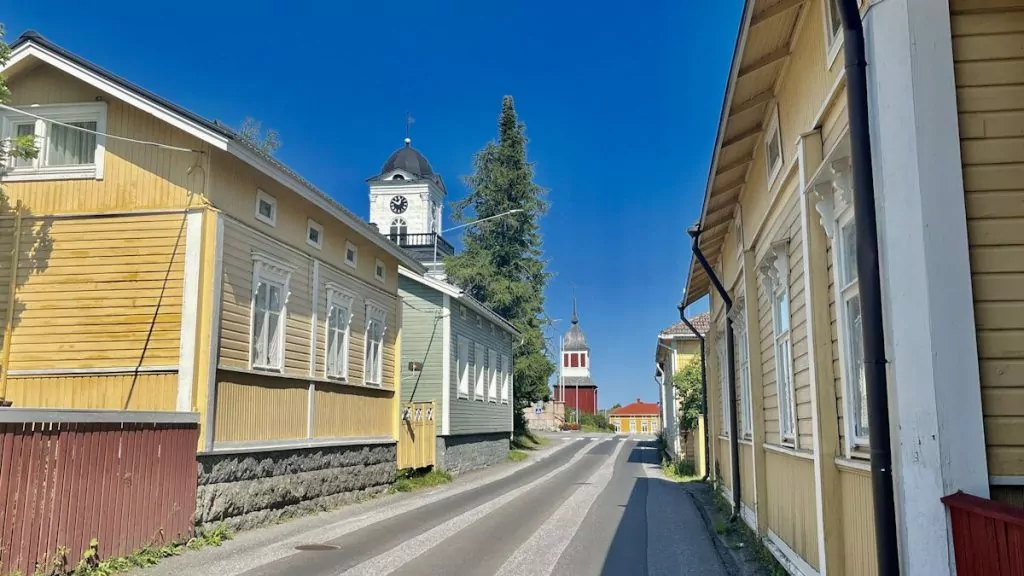
2. Trade in the market
Markets can be arranged in different parts of Ostrobothnia and not least in Kristinestad, where annual markets have been organised since 1873. You can visit the following markets in Kristinestad, of which the summer market is by far the largest. This usually attracts no less than 60,000 visitors.
- Spring market (early April)
- Summer market (third weekend after Midsummer)
- Old-fashioned market day (first Saturday in September)
- Michaelmas market (early October)
You can also take the opportunity to experience the city festival "Jakob Days", which is organised every year at the end of July in Jakobstad. The festival includes a market, but also various cultural events.
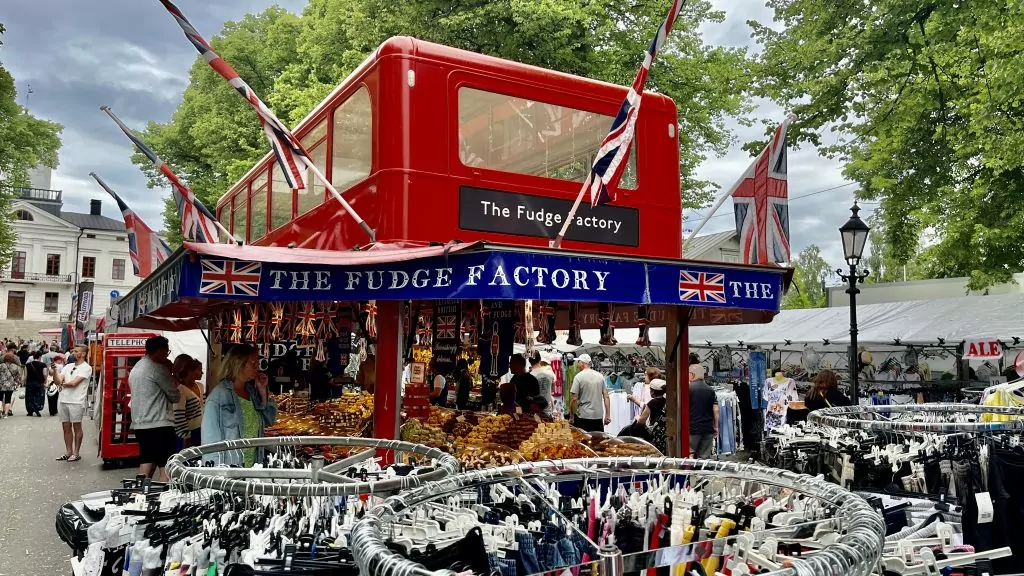
3. Discover open-air museums
There are some really nice open-air museums in Ostrobothnia, which are well worth checking out. We can recommend visits to Öjskog Park in Närpes, where you'll find a number of historic museum buildings, including a charming country store, as well as a cool revolving auditorium used for theatre.
We can also recommend visits to Stundar Open Air Museumwhich is located in Solf in the municipality of Korsholm, just south of Vaasa. There are 60 historic buildings, many of which are decorated as farms, cottages and craft environments from the past.
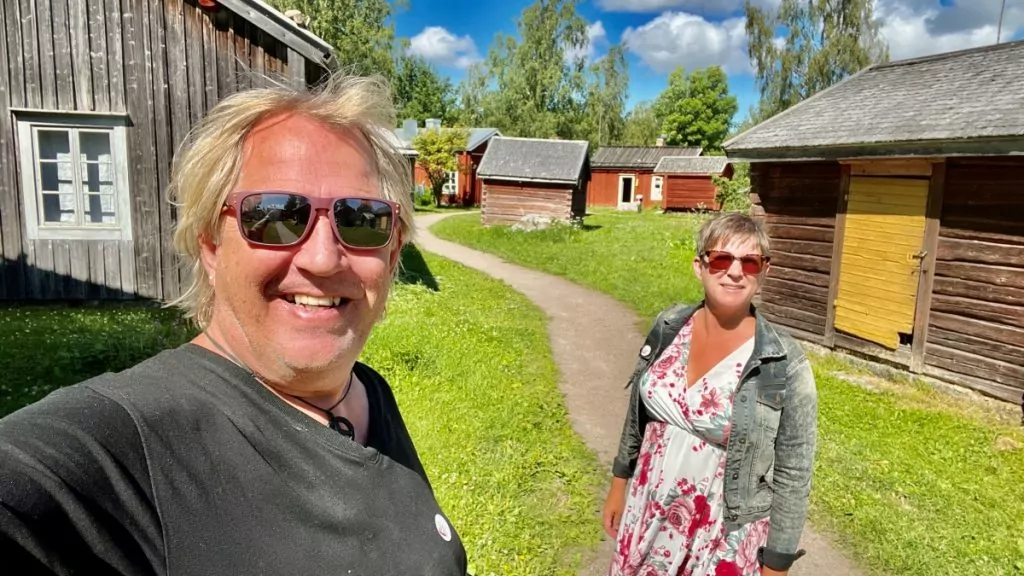
4. Check out interesting museums
In addition to open-air museums, there are many other museums worth visiting. Here are some examples of interesting museums that you can check out while travelling through Ostrobothnia (and yes, there are many more!):
- Museum of Pharmacy in Öjskogsparken in Närpes, displays a wide range of old pharmacy artefacts.
- Carlsro MuseumKristinestad, is a 19th century villa filled with 11,000 antique artefacts.
- Kuddnäs Museum, Nykarleby, shows the home where the famous author Zacharias Topelius grew up.
- Lebellska merchant's houseKristinestad, shows how a rich merchant family lived in the 18th and 19th centuries.
- NanoqJakobstad, is an Arctic museum where you can learn about Arctic peoples, cultures and customs.
- Museum of OstrobothniaVasa, tells the story of local culture through the centuries, and also showcases the flora and fauna of the area.
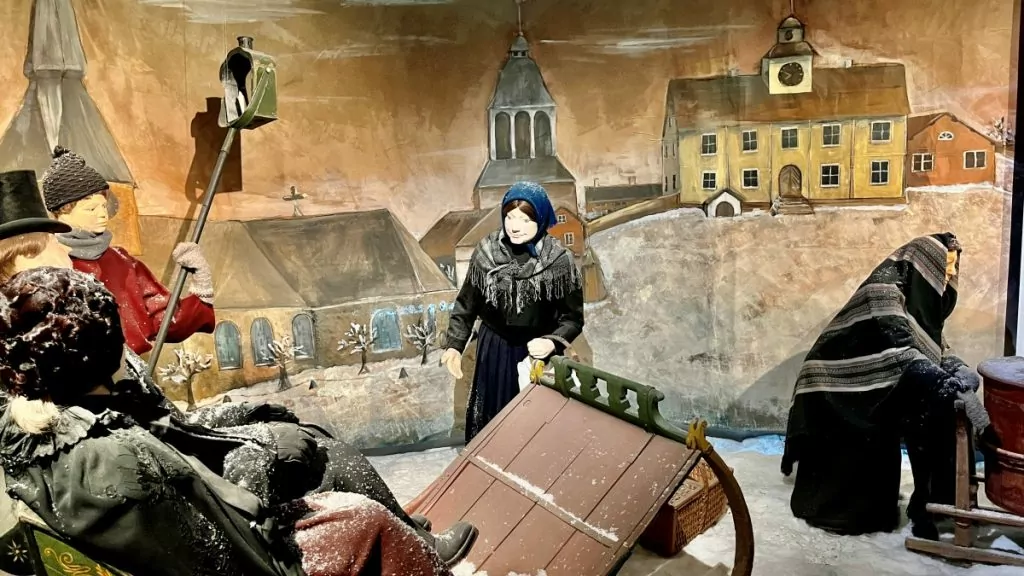
5. See art
If you like art, there is a lot to discover, not least in the largest city in Ostrobothnia. Vaasa. There you can see art at the Ostrobothnian Museum, the Kuntsi Museum of Modern Art and the Vaasa Art Centre. You can also check out Wasa Graffitilandia, which offers a slightly different art experience.
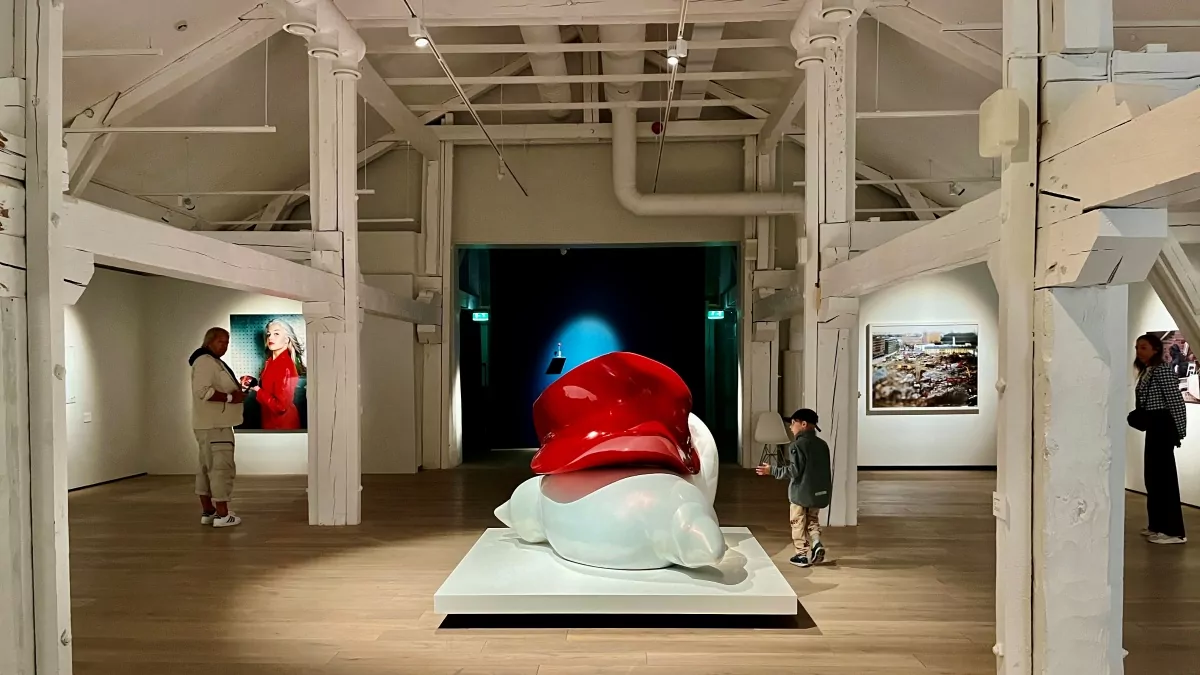
6. Visit historical sites
Ostrobothnia is full of historical sites that tell the story of times gone by. Here are some places where you might want to make a stop along the way:
- Gamla Vasa burned down in a violent fire in 1852, and today the site contains the old court, ruins and a fine museum.
- Oravais battlefield is the site of the Battle of Oravais was in 1808, when the Swedes lost Finland to Russia.
- Söderfjärden meteorite crater, south of Vaasa, was formed about 520 million years ago when a burning meteorite struck.
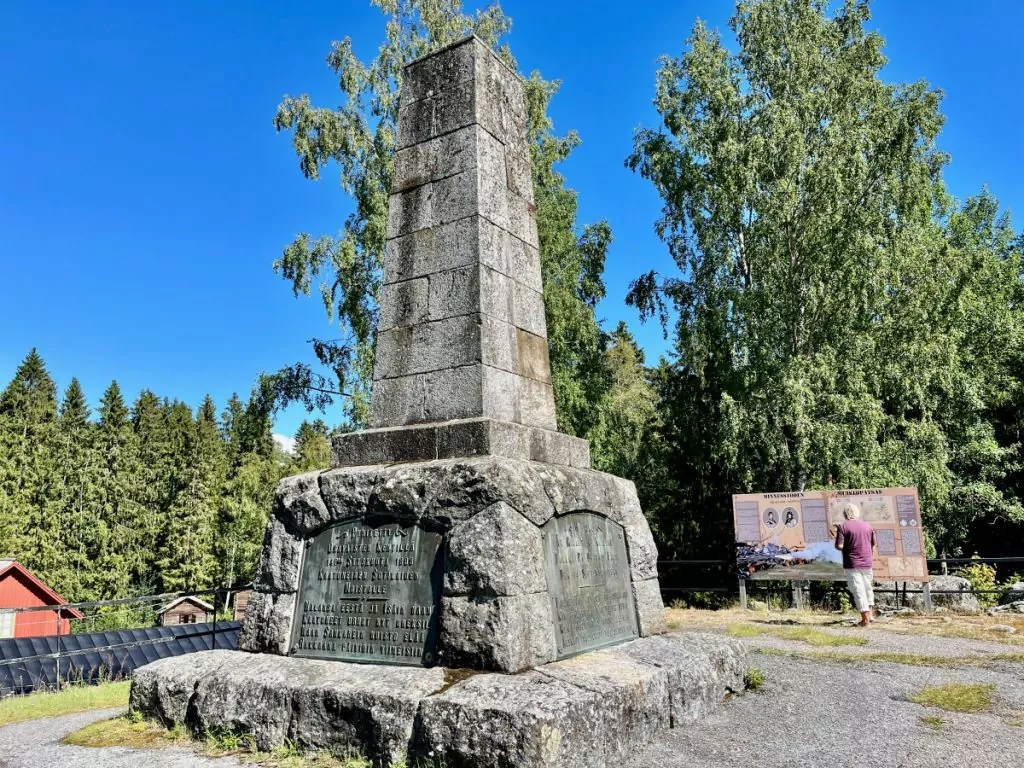
7. admire beautiful churches
There are plenty of beautiful historic churches in Ostrobothnia. Here are some that might be worth checking out:
- Närpes church is a beautiful medieval church and next to it are the unique church stables, where horses were once housed.
- Pedersöre church, in Jakobstad, is a powerful and beautiful church, remodelled in the 18th century.
- Church of Ulrika Eleonora, in Kristinestad, is a fine old wooden church that is famous for its leaning tower.
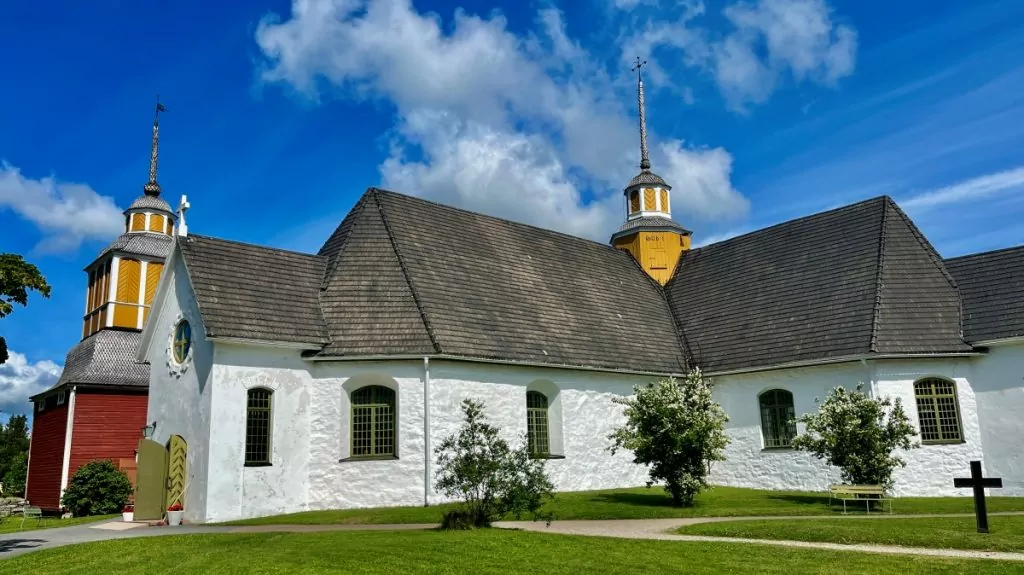
8. Fascinated by Replot Bridge and the Kvarken Archipelago
The Kvarken Archipelago, together with High Coast in Sweden, a UNESCO World Heritage Site, tells the story of the land uplift that occurred after the last ice age. Via the Replot Bridge, located north of Vaasa, you can reach Sommarsund, Klobbskat or Svedjehamn on the island of Björkö in the Kvarken archipelago. The bridge, which is the longest in Finland, was opened in 1997 and measures 1045 metres.
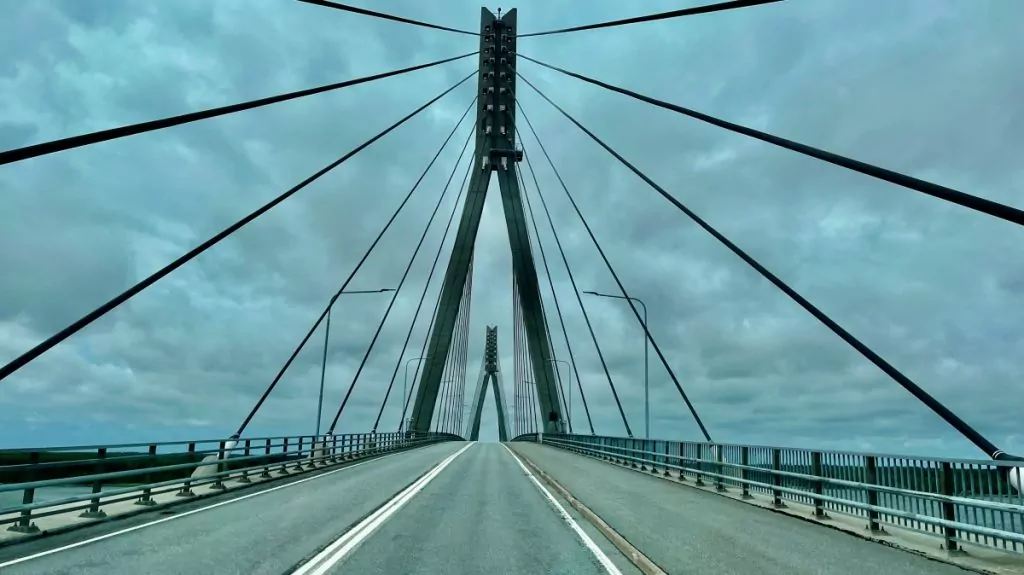
9. Hiking, cycling or canoeing
There are many places in Ostrobothnia where you can go hiking, cycling or canoeing, such as in the Kvarken archipelago. In Svedjehamn on the island of Björkö there are two popular hiking trails: Bodvattnet around and Björköby-Panike hiking trail.
About 800 metres from Svedjehamn you will also find the popular viewing tower Saltkaret, from where you have a great view and can see the unique moraines called "de Geer moraines".
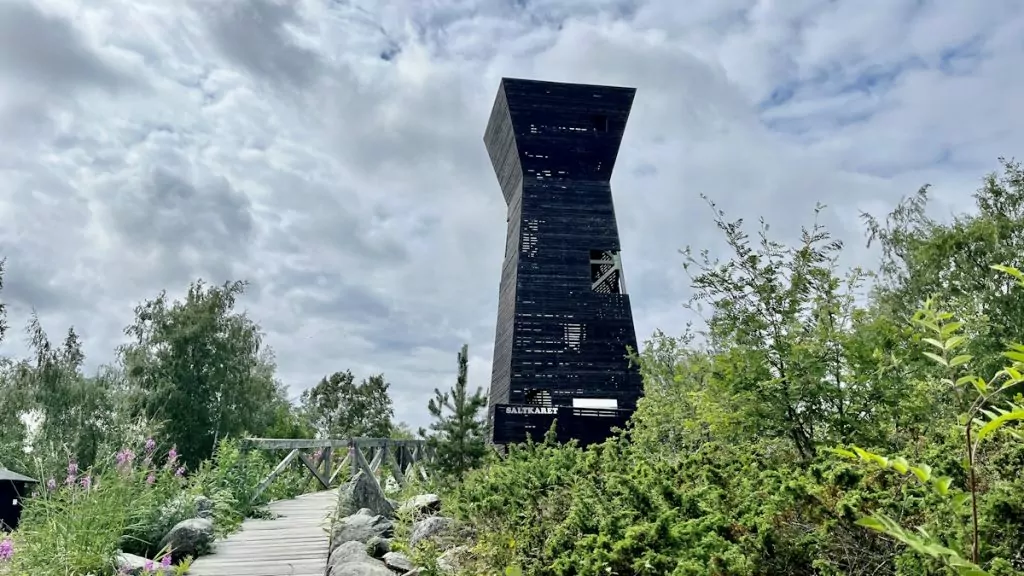
10. go on boat trips
In the summer, it is nice to go on different boat trips in the sea area. For example, we made a short boat trip to Köpmanholmen in Larsmo municipality, where you can spend a few hours walking, relaxing and visiting restaurants. Wonderful!
In the area around Vaasa, you can cruise with m/s Corina from the World Heritage Gate/Replot Bridge or with m/s Tiira in Vaasa's inner archipelago. Starting from Pietarsaari, you can take a boat to the island of Mässkär, where there is beautiful nature and a restaurant open in the summer.
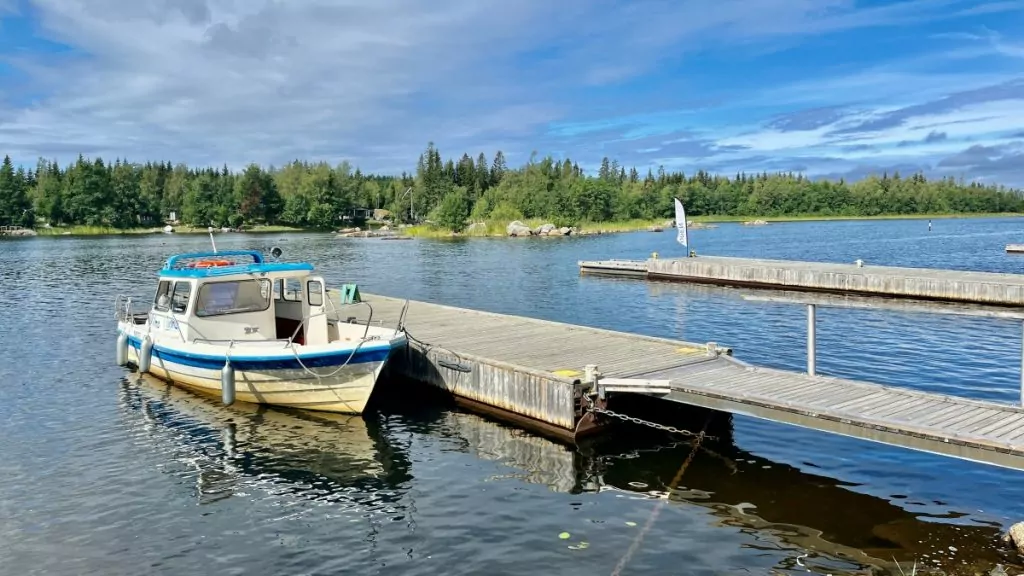
11. Try local delicacies
When travelling, it is always exciting to try local delicacies. For example, don't miss the amazing tomatoes when you visit the city of tomatoes. Närpes - you can try them in the lovely Linds kitchen, or why not in the form of tomato ice cream?
You can also try "Finnish pigs", which is a kind of donut with jam in the filling. Other things we appreciated were the large selection of fresh perch, the delicious Finnish ice cream and the opportunity to buy eggs in the countryside directly from small "egg stalls".
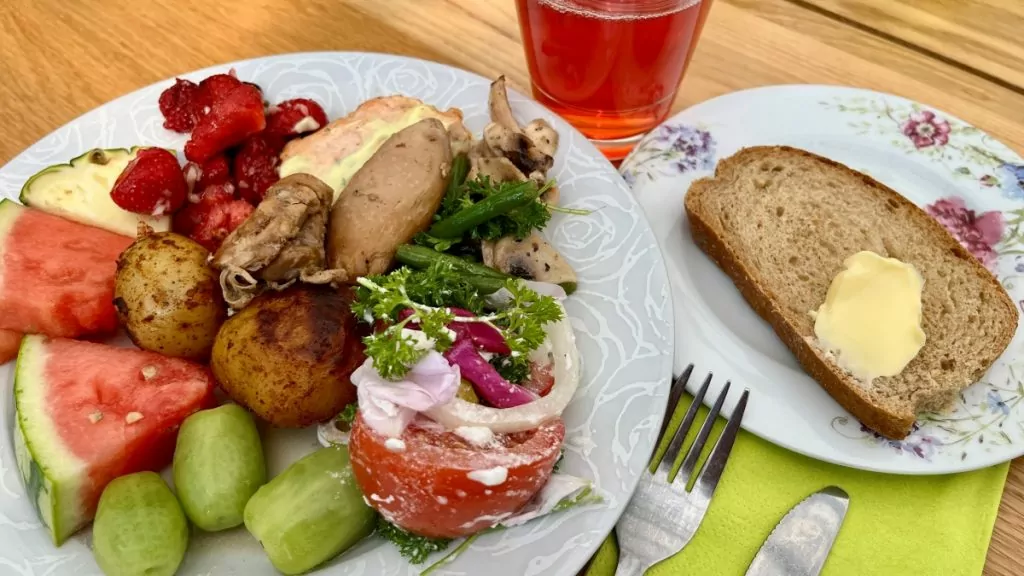
12. Learn about the dialects of Ostrobothnia
Ostrobothnian is a collective name for the Finnish-Swedish dialects spoken in Ostrobothnia. The best known is the dialect spoken in Närpes, which is so special that it can be difficult for other Swedish speakers to understand. Swedish linguist and broadcaster Fredrik Lindström has taken an interest in the dialect, claiming that the Närpes language is similar to the Swedish spoken in Stockholm in the 16th century. Fascinating, isn't it?
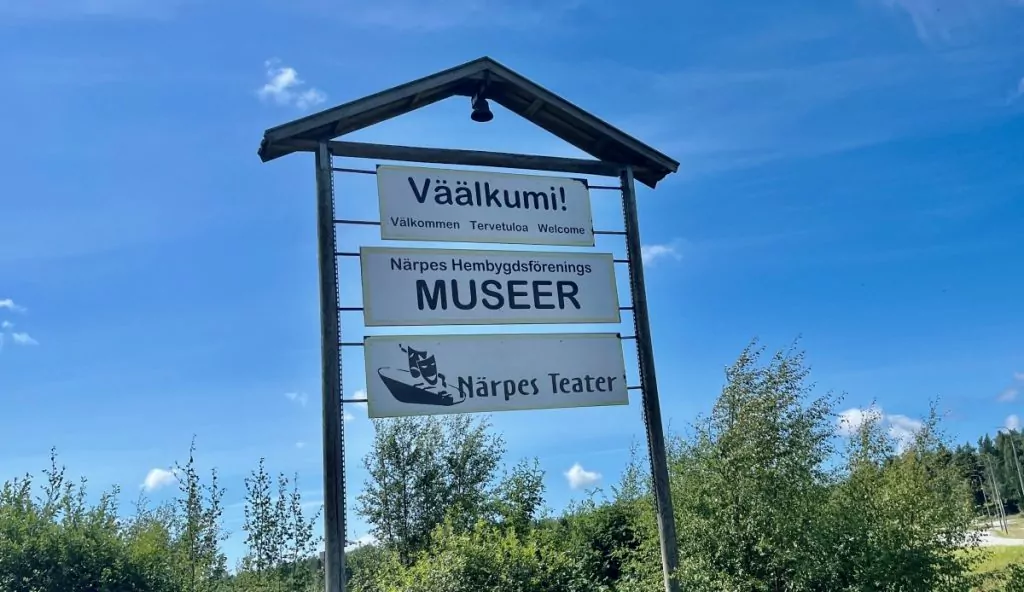
More things to do in Ostrobothnia for culture and history lovers
There is, of course, even more to experience in Ostrobothnia than our tips. Here you will find even more suggestions for things to do in Ostrobothnia for those who like culture and history.
- Brändö is an old working-class neighbourhood in Vaasa, where you can find the Vaasa Maritime Museum.
- Kaskö is Finland's smallest town, located on the island of Bockholmen outside Närpes.
- Strömsö is located in Västervik, in Vaasa, and offers a marina and nice villas, known from the TV programme "Strömsö".
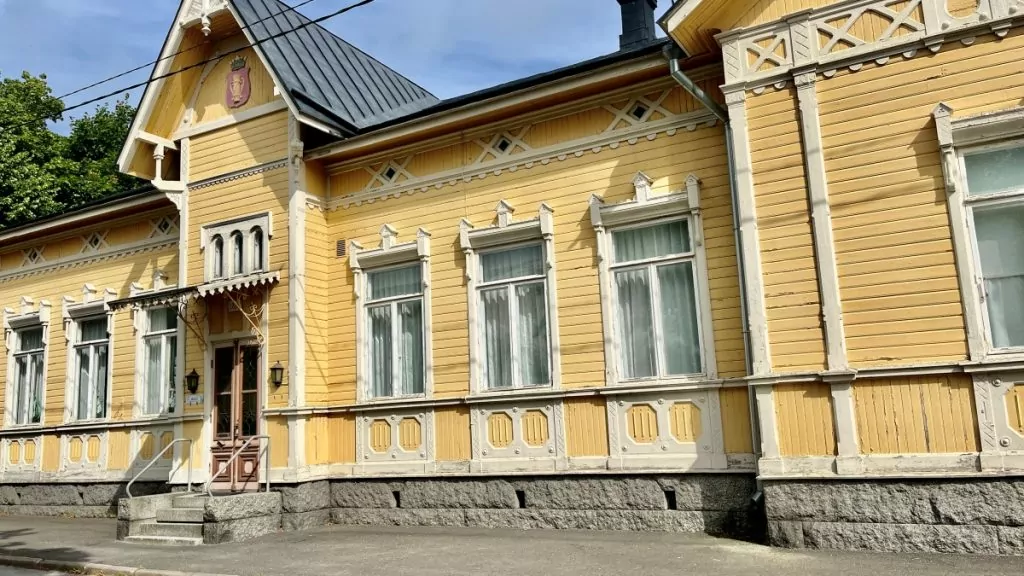
More things to do in Ostrobothnia for nature lovers
Are you most comfortable in nature or on the water? Here you'll find even more tips on things to do in Ostrobothnia that might suit you.
- Aspegren's garden, in Jakobstad, is a lovely oasis with flowers, an orangery, a gazebo, a village museum and a restaurant.
- Fäboda is a popular area on the coast outside Jakobstad, with a sandy beach, cliffs, hiking trails and a cosy coffee shop.
- The way of seven bridges (regional road 749) is a beautiful road that runs from Nykarleby, via Jakobstad and Larsmo, to Kokkola.
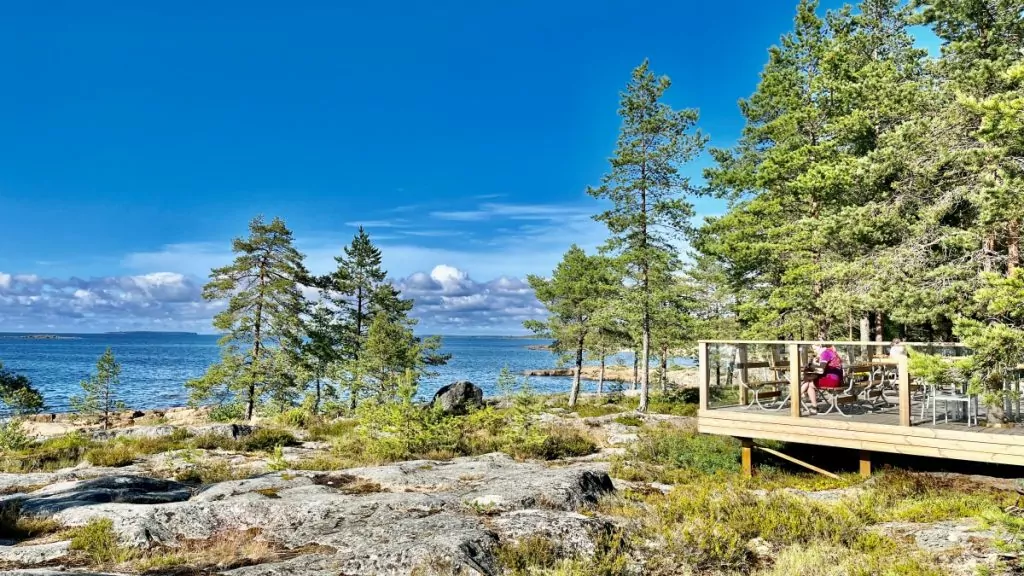
More to do in Ostrobothnia with children
Here are some more tips on things to do in Ostrobothnia for families with children or teenagers.
- Sandö beach is a swimming area located in the centre of Vaasa, on the island of Sandö, with lifeguards and diving towers.
- Tropiclandia is a water park in Vaasa, and can be reached by the 'Little Train' from Top Camping Vaasa.
- Tyynelän Tontut, in Larsmo, is a fantastic farm with handmade gnomes and beautiful museum settings. Note, not just for children - for everyone!
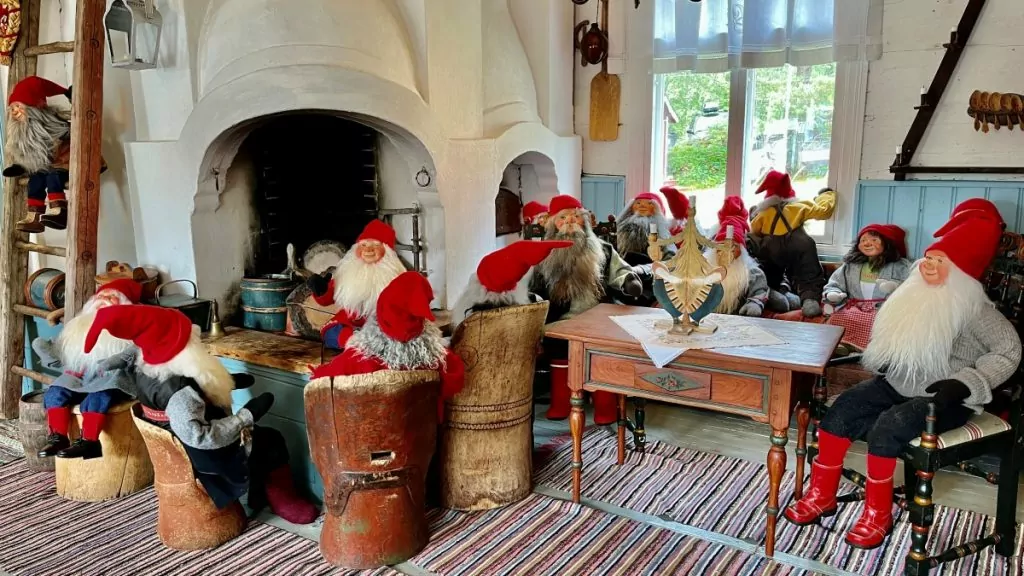
Where can you stay in Ostrobothnia, or park your caravan?
In Ostrobothnia there are many hotels and other accommodation options to choose from. There are also plenty of campsites where you can stay with a motorhome, caravan, tent or cabin. There are also parking spaces for motorhomes, and it is also possible to hitchhike.
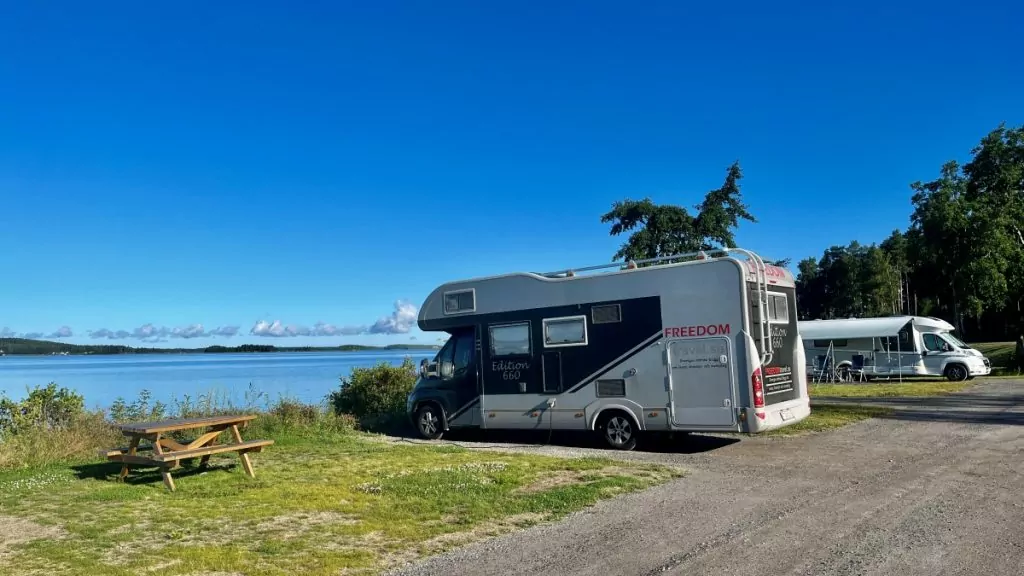
More things to see and do in the neighbourhood of Ostrobothnia
There is of course even more to see and experience in the neighbourhood of Ostrobothnia. Just south of Ostrobothnia, you can visit the beautiful Unesco city of Helsinki. Rauma. If you head north instead, you can take the opportunity to discover the charming neighbourhood of Karleby and Kalajoki sand dunes. Even more tips for things to see and do in Finland can be found below.
Things to do in Rauma - 15 tips for a Finnish UNESCO city
What to do in Rauma, Finland? Founded in 1442, this small town surprises with its...
Things to do in Oravais, Ostrobothnia - 10 tips
What to do in Oravais, Ostrobothnia, Finland? Oravais is no more than a...
Things to do in Kristinestad - 15 tips for a Finnish wooden house idyll
What to do in Kristinestad, Finland? This small Ostrobothnian wooden house idyll offers charming alleyways,...
What to do in Helsinki - 30 sights and experiences
What to do in Helsinki? This Nordic capital offers a lot of design and...
Ten hours in Turku for a bon vivant
Guest writer: Jonathan Gharbi de Maré There's a lot to do in a day. Maybe not a city...
Winter weekend in Turku - Christmas atmosphere and markets
We have had a wonderful winter weekend in Turku, filled with Christmas spirit and Christmas markets, combined with museum visits....
Finncanopus to Finland - premiere of new vessel
Guest writer: Jonathan Gharbi de Maré It was time for a premiere in a double sense. Both for...
Eating well in Finland - 4 restaurants around Turku
Can you eat well in Finland? What do you think of when you hear "Finnish food"? I...
Finnlines' new vessel to Åland and Naantali - the state-of-the-art Finnsirius
Finnline's new ship to Åland and Naantali is called Finnsirius and is a state-of-the-art cruise ship with...
BestPark car parks in Finland - we have tested them
Have you discovered BestPark sites in Finland? We have been travelling by motorhome in Finland for almost...
Matka travel fair in Helsinki 2018
The Matka travel fair in Helsinki is not only Finland's largest travel fair, but the largest travel fair in the entire...
What to do in Jakobstad, Finland - 20 tips
What to do in Pietarsaari, Finland? This lovely little Ostrobothnian town has everything...
What to do in Närpes - 12 tips for the tomato town in Finland
What to do in Närpes, Finland? This interesting Ostrobothnian town offers everything from...
Turku archipelago in winter splendour - ice fishing and sauna bathing
At lunchtime yesterday we landed at Helsinki airport. It was not quite as cold as we...
Visiting Bomarsund Fortress - interesting history in Åland
Visiting the Bomarsund Fortress is really interesting. Here, Russia once built a mighty...
What to do in Turku - 30 sights and experiences
What to do in Turku? This Finnish city, once the capital of Finland, is...
Matka 2019 - the major travel fair in Helsinki
It's time to tell you about Matka 2019! Matka is the largest travel fair in the Nordic region and...
Beer tasting at the 'School' in Turku
When we were in Turku, we visited Koulu, or "Skolan" as it is called in Swedish. It...
Suomenlinna in Helsinki - sea fortress with Swedish history
Visiting Turku Castle - Swedish and Finnish history
Visiting Turku Castle in Finland is very interesting. The castle, which is over 700 years...
Visiting Kastelholm Castle - Åland's only medieval castle
Visiting Kastelholm Castle is very interesting and exciting. This is Åland's only medieval castle, founded...
Matka - Northern Europe's largest travel fair
We visited Matka - Northern Europe's largest travel fair. On 21-24 January, the doors opened at the Helsinki Exhibition...
Things to do in Vaasa in Finland - 20 sights and experiences
What to do in Vaasa, Finland? This Finnish city is the centre of Ostrobothnia, and...
Day cruise to Åland with Eckerölinjen
Yesterday we went on a day cruise to Åland with Eckerölinjen. Peter's father turned 80 years old...
Things to do in Föglö, Åland - our top 10 tips
What to do in Föglö in Åland? This little gem, in the Åland archipelago, has...
Winter cruise to Finland - Christmas atmosphere on board the Finnsirius
We have made a winter cruise to Finland, with Finnline's new fine cruise ship Finnsirius. In December is...
Bothnian Coastal Route - FREEDOMtravel Themed Roads
The Gulf of Bothnia Coastal Route takes you around the Gulf of Bothnia, which is the northernmost bay of the Baltic Sea,...
Facts about Finland - 30 things you (might) not know
Facts about Finland are on offer today! Our neighbouring country offers everything from exciting history to...
Some reflections from Finland
Although we travel a lot, we may not travel enough in our neighbouring countries. We...
Turku market hall - delicacies and pastries
Do you like food and are thinking of travelling to Turku? If so, you should definitely plan a...
Caravan - Motorhome exhibition in Helsinki
This weekend we visited Caravan, a motorhome exhibition in Helsinki. The fair was organised in connection with the big...
Visiting Moominworld in Naantali - tips and info
Visiting Moominworld in Naantali, Finland, is a wonderfully cosy and nostalgic experience, especially if you...
What to do in Oulu, Finland - 20 tips
What to do in Oulu, Finland? This city, located at the mouth of the Oulu River, is...
What to do in Kokkola, Finland - 17 tips
What to do in Kokkola, Finland? Situated on the coast, this cosy city offers...
What to do in Åland - 30 sights and experiences
What to do in Åland? This self-governing and Swedish-speaking little island kingdom is not only beautiful,...
Things to do in Haparanda and Tornio - 16 tips
What to do in Haparanda and Tornio? Two cities in two different countries, but almost...
Gold nuggets in Åland - tips for your visit
Guest writer: Jonathan Gharbi de Maré Åland is cosy, beautiful and relaxing. There is a lot to see...
Haltia Nature Centre in Espoo, Finland
Outside Espoo, not far from Helsinki, you will find the Haltia Nature Centre. To come here is to...
Visiting Kalajoki Camping - lovely sand dunes in Finland
Visiting Kalajoki Camping in Finland can be a wonderful experience. When, on the eve of our trip to Finland, we...
Cool mini caravans and motorhomes at Caravan in Helsinki
Last Friday, we took a look at mini caravans and motorhomes at Caravan Helsinki, the motorhome and caravan exhibition that...
Food in Åland - 16 delicacies to try
Writer: Helena Bergström Want to experience food in Åland? Even though Åland is not that big...
Things to do in Kökar on Åland - our 12 best tips
What to do in Kökar in Åland? This is a fantastic little island to visit,...
8 restaurants in Åland that you don't want to miss
Writer: Helena Bergström There are many nice restaurants in Åland. We have visited a bunch of...
Choosing a ferry or flight to Helsinki?
Should you choose ferry or flight to Helsinki? As you may know, we are travelling to Helsinki...
Things to do in Eckerö, Åland - 10 tips
What to do in Eckerö, Åland? This western part of Åland is the closest to Sweden,...
Things to do in Naantali - 15 tips for a Finnish archipelago gem
What to do in Naantali? This small Finnish town is a real archipelago gem that you...
Turku archipelago: ferries, art and barefoot paths
Yesterday we visited the Art Bank art museum, which turned out to have some real surprises. The day before yesterday...
Things to do in Mariehamn, Åland - 12 tips
What to do in Mariehamn, Åland? This cosy little town offers everything from...
Weekend in Turku - spa, culture and good food
A few weeks ago we spent a weekend in Turku, filled with spa, culture and good food...
Things to do in Raahe, Finland - 10 tips
What to do in Raahe, Finland? This is a small and very charming town...
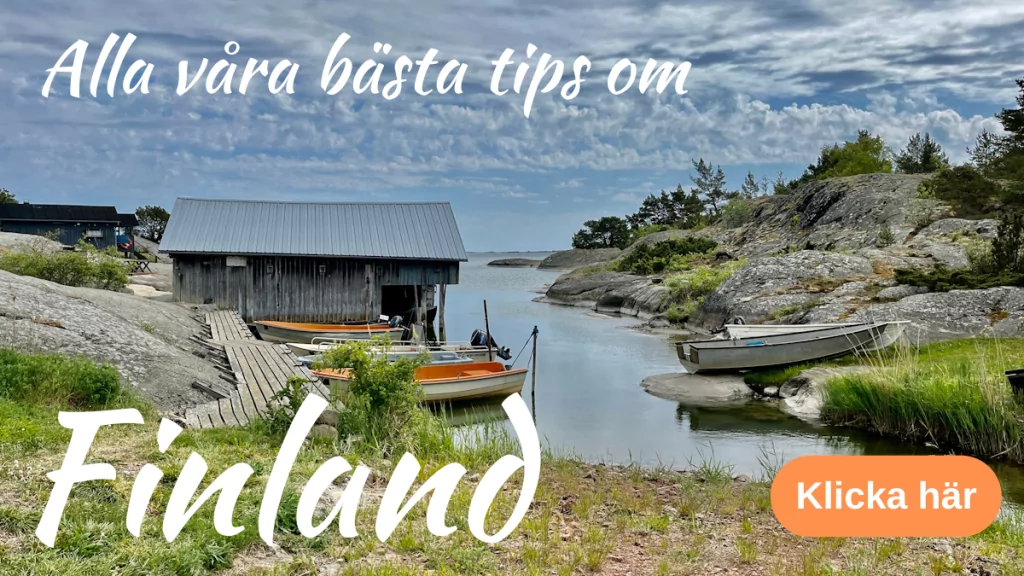
Even more things to do in Ostrobothnia?
Have you visited Ostrobothnia? Do you have any other tips on what to see and do in Ostrobothnia? Please tell us!
Facts about Ostrobothnia
- Country: Finland
- Location: On the west coast of Finland.
- Population: More than 180 000 (2019)
- Municipalities: Jakobstad (Pietarsaari), Kaskö (Kaskinen), Korsholm (Mustasaari), Korsnäs, Kristinestad (Kristiinankaupunki), Kronoby (Kruunupyy), Laihela (Laihia), Larsmo (Luoto), Malax (Maalahti), Närpes (Närpiö), Nykarleby (Uusikaarlepyy), Pedersöre (Pedersören kunta), Vaasa (Vaasa) and Vörå (Vöyri).
- The name: The word 'bottom' is also found in the Gulf of Bothnia, the Bothnian Sea and Västerbotten. In Finnish: Pohjanmaan maakunta.
- Language: Eleven of Ostrobothnia's 14 municipalities are bilingual with Swedish as the majority language. Kaskinen and Vaasa are bilingual with Finnish as the majority language. Laihela is monolingual Finnish.


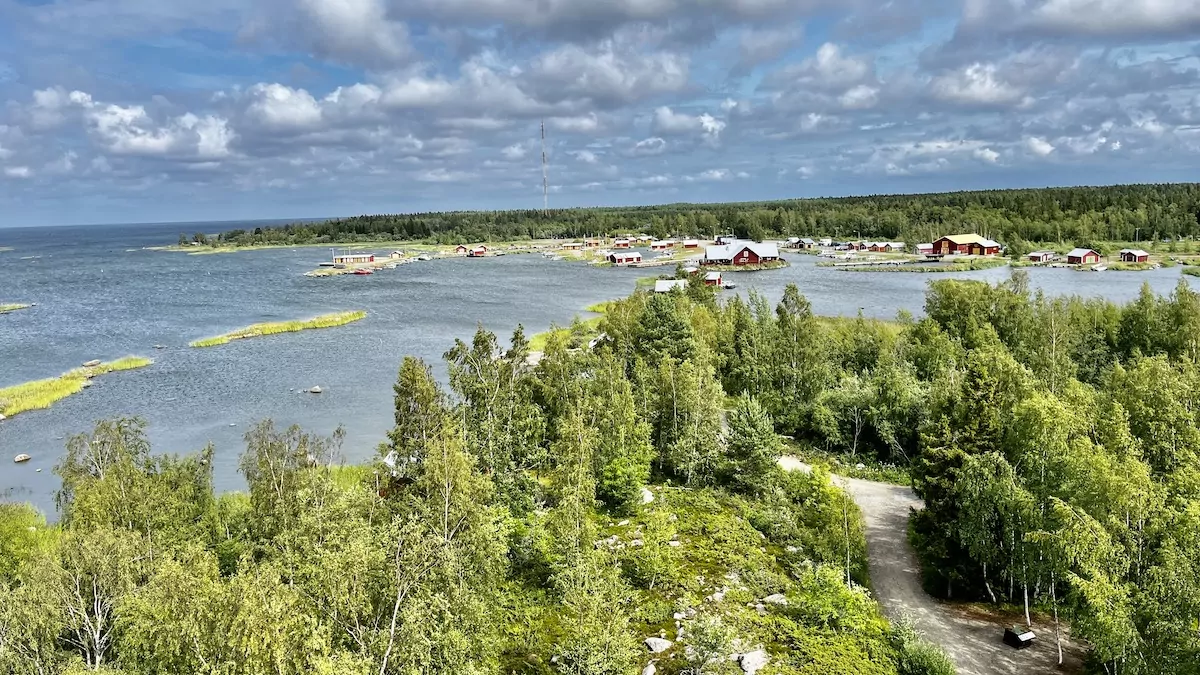






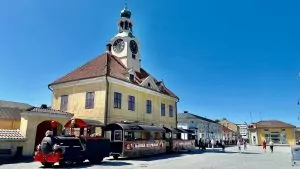
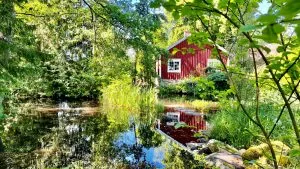
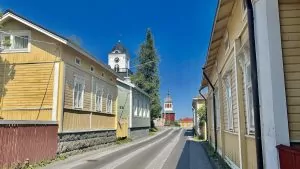
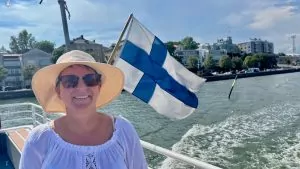
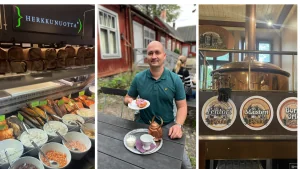

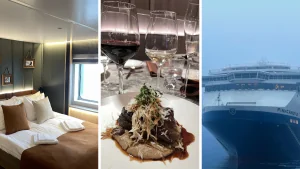
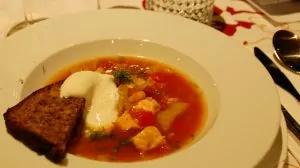
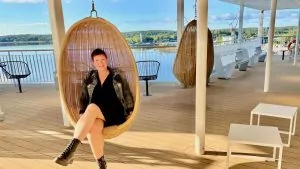
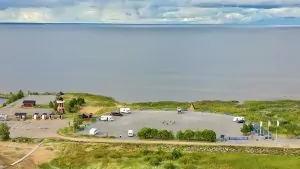
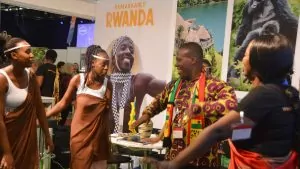
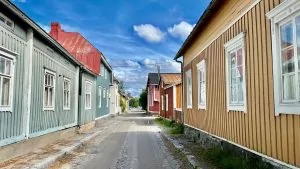
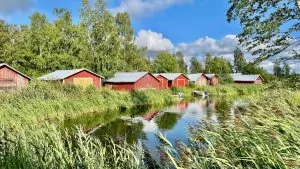
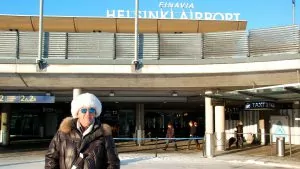
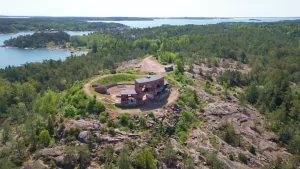
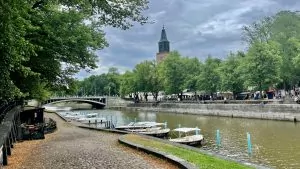
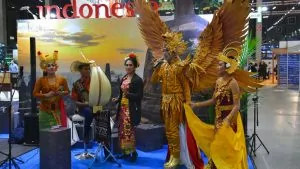
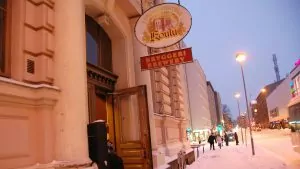
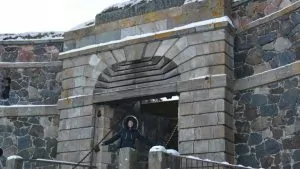
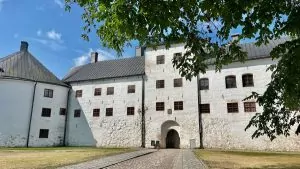
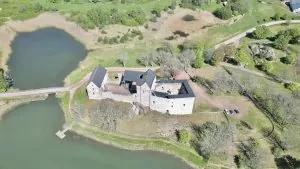
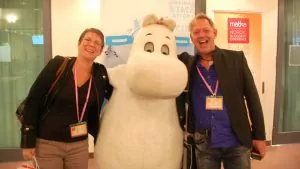
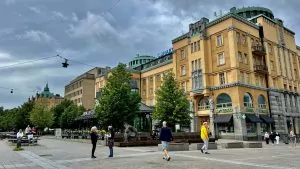
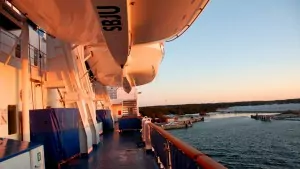
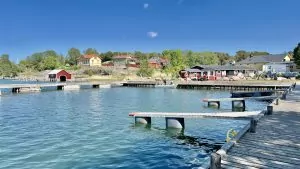
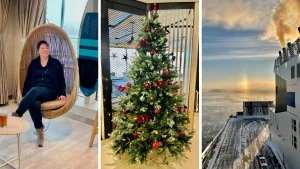

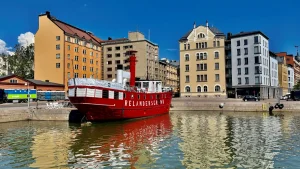
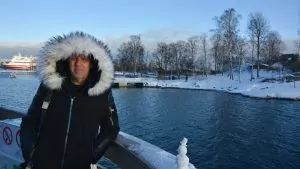
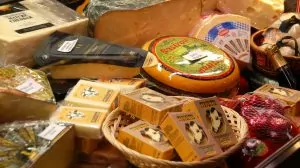
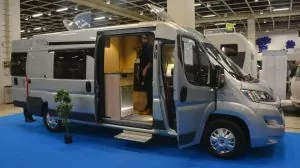
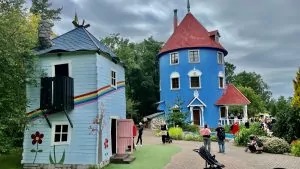
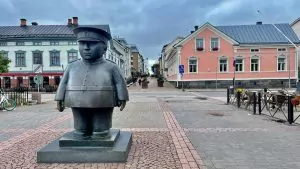
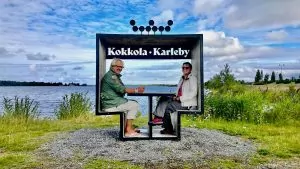
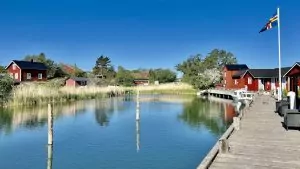
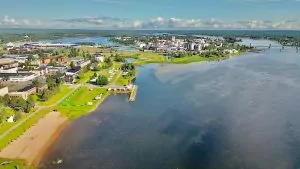
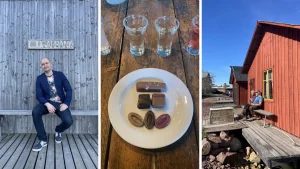
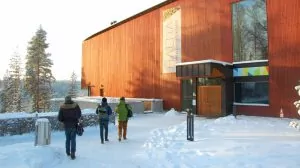
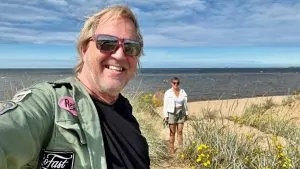
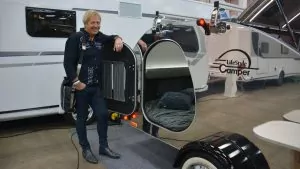
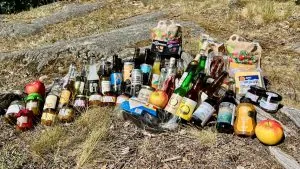
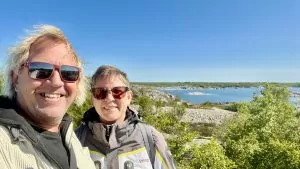
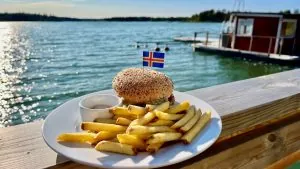
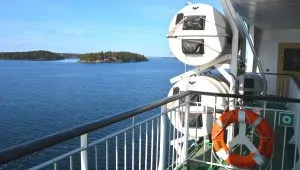
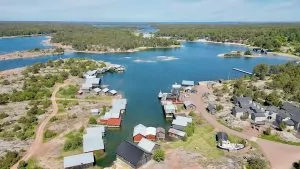
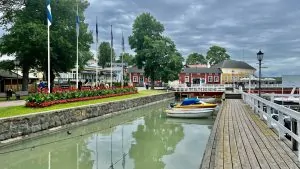
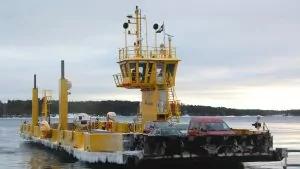
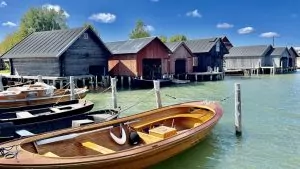
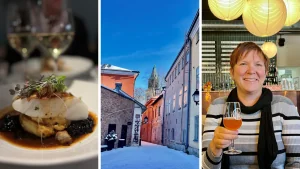
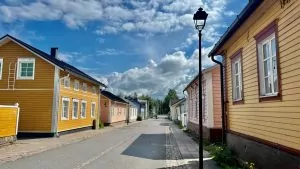
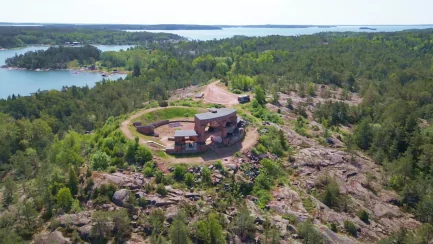
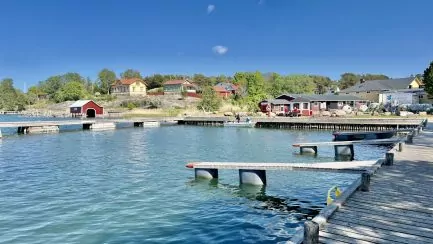
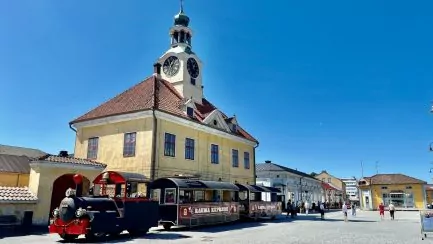
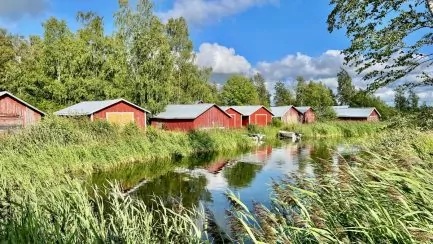
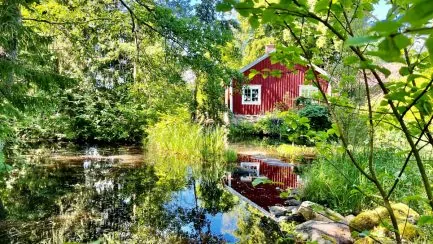
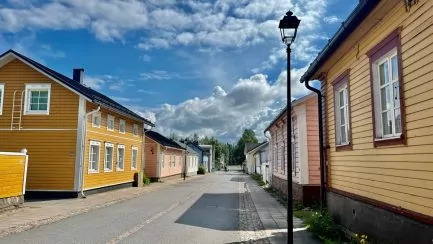



Sylvia Larsson says:
After you published your trip to Finland 🇫🇮 we were inspired to make this trip. Seen some of the Nordic countries and Norway but Finland has been forgotten so thank you.
I will come back to you with tips, but I haven't read your latest post, which I will read carefully.
So your report became our planning for the motorhome this spring.
Thank you
16 March 2024 - 22:35
Lena - good for the soul says:
After your reports from Finland, I have become very keen to do something similar. Looks very nice and the calmness attracts me.
Hug Lena
18 March 2024 - 20:06